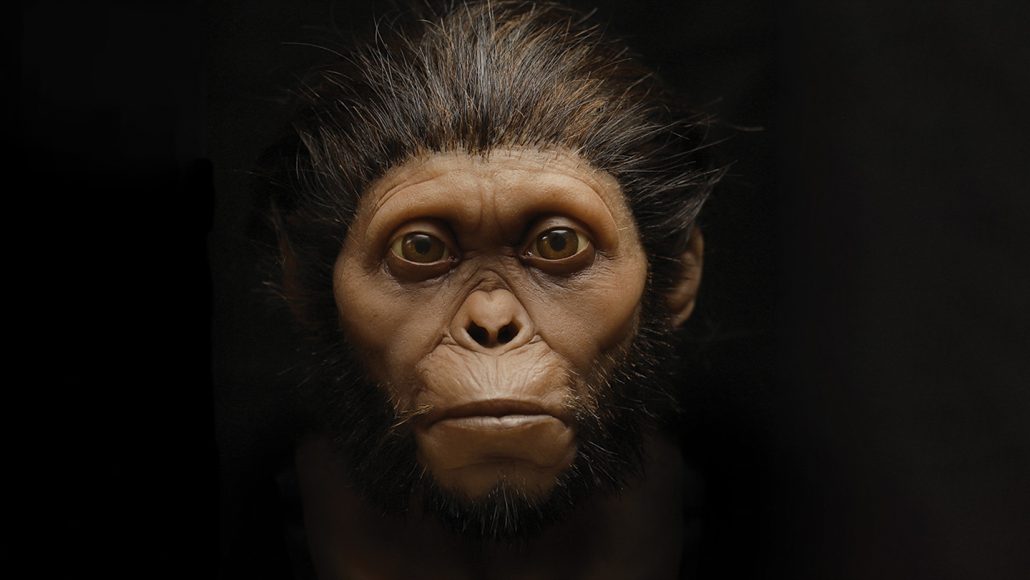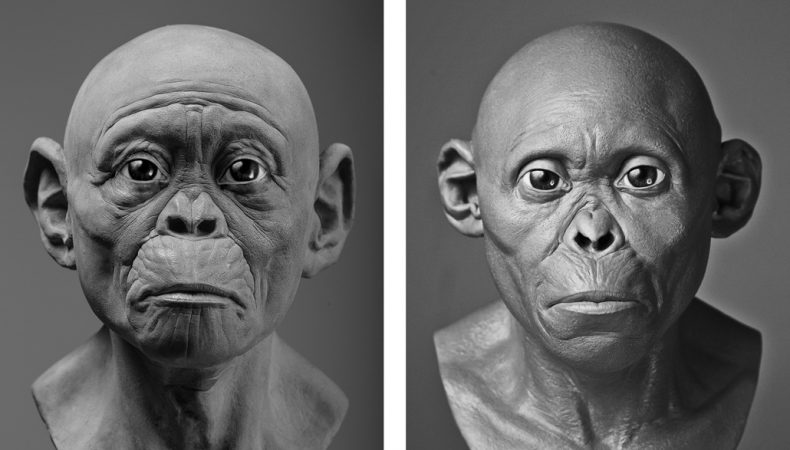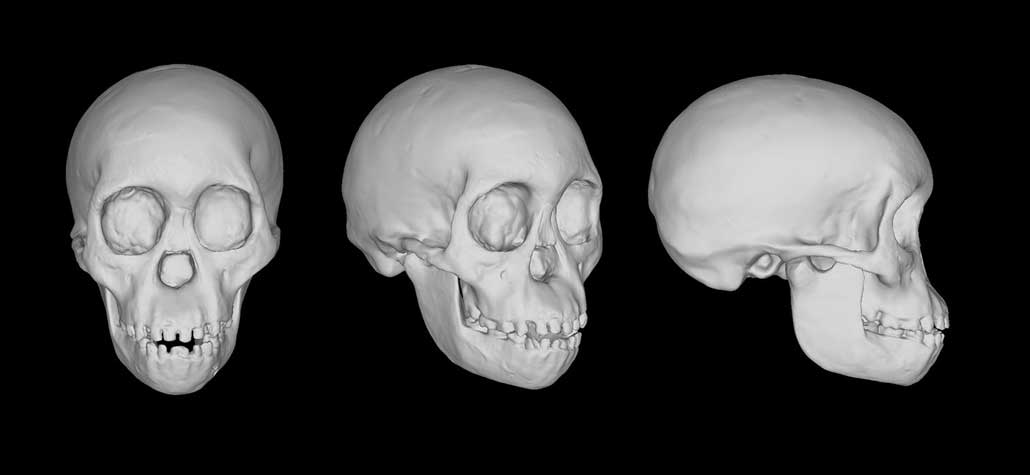How scientists can get a better picture of our extinct relatives
More scientific facial reconstructions could give a more accurate view of human evolution

New guidelines could lead to more accurate portraits of extinct members of the human family tree, such as this sculpture of an Australopithecus africanus child who lived 2.8 million years ago.
G. Vinas, R.M. Campbell, M. Henneberg and R. Diogo
Depictions of extinct human ancestors and cousins often are more art than science.
Take Australopithecus africanus. This member of the human family tree, or hominid, lived millions of years ago. Scientists made two sculptures showing what this hominid might have looked like. The busts were based on the skull of a child that lived 2.8 million years ago. One bust was made using a sculptor’s intuition. It appears more apelike. The second, made with a scientist’s help, appears more humanlike.

Now, the team has come up with guidelines to make more accurate portraits of species known only from fossilized bone. “The reconstructions of the past, most of them did not have a scientific basis,” says Rui Diogo. “Our goal is to change the methods and to change the biases,” he says. That should give a more accurate view of human evolution. His team reported its new guidelines February 26 in Frontiers in Ecology and Evolution.
Getting the depictions right matters, says Diogo. He is a biological anthropologist at Howard University in Washington, D.C. Museum visitors often see artists’ renditions of Neandertals or extinct hominids as reality. But those visitors may not realize the work is biased. And that can skew people’s views. It can even bolster prejudices about present-day people.
The Smithsonian National Museum of Natural History in Washington, D.C. is a perfect example. An exhibit of extinct hominids shows skin getting lighter as species began walking upright. “But there is zero evidence to say the skin was whiter,” Diogo says. That depiction might reinforce the incorrect and racist idea that people with lighter skin are more evolved.

Scientists and artists often work together to depict our ancestors. But their choices may be driven more by whim than science, Diogo’s team says. By studying muscles in the great apes and other nonhuman primates, the team has created reference databases. Those databases are part of the Visible Ape Project. Scientists could use them to reconstruct faces from fossils. Even then, the choice of an ape or a human as a starting point can lead to different outcomes.
Artists’ depictions also can give faulty ideas about the intelligence and behavior of extinct people. Neandertals are often shown with matted, dirty hair, says Ryan Campbell. He studies anatomy at the University of Adelaide in Australia. “There is a bias toward portraying our ancestors as if they were stupid and didn’t have hygiene,” he says.
But animals of all kinds groom themselves. There is no reason to think that Neandertals were different. In fact, showing our ancestors without hair might be more accurate, Campbell says. Hair is rarely preserved in fossils. And DNA data from bones may hint at hair color. But the data don’t reveal grooming habits.

Educators and Parents, Sign Up for The Cheat Sheet
Weekly updates to help you use Science News Explores in the learning environment
Thank you for signing up!
There was a problem signing you up.







